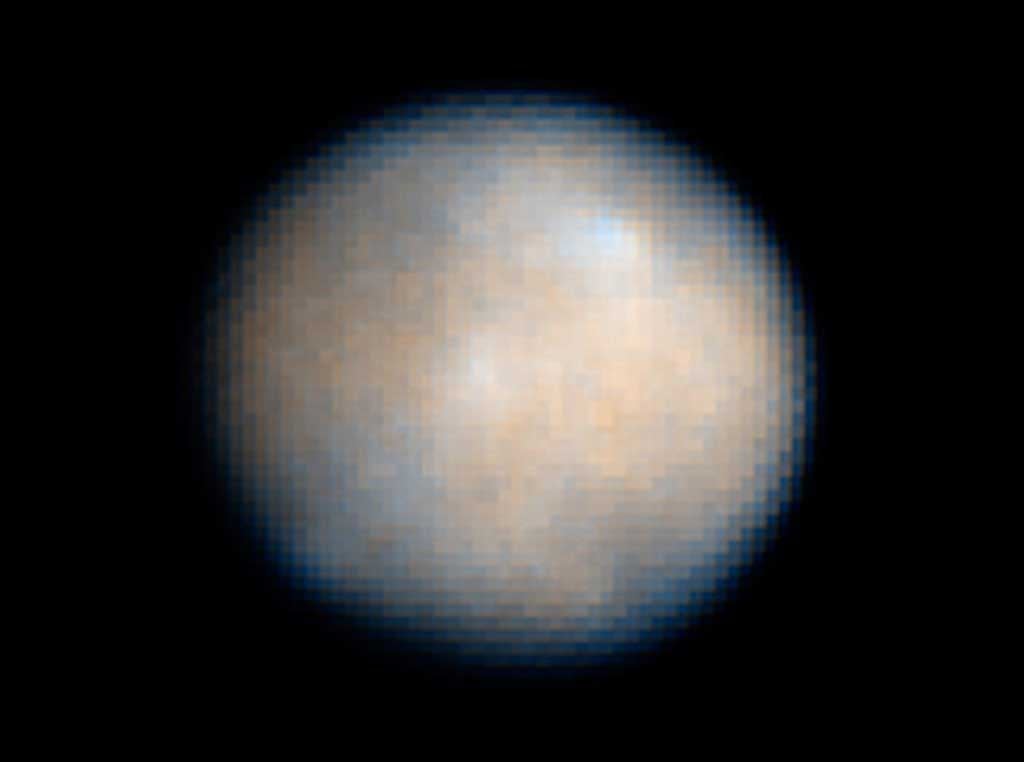Over the next several weeks, Dawn will deliver increasingly better and better images of the dwarf planet, leading up to the spacecraft’s capture into orbit around Ceres on March 6. The images will continue to improve as the spacecraft spirals closer to the surface during its 16-month study of the dwarf planet.
“We know so much about the solar system and yet so little about dwarf planet Ceres. Now, Dawn is ready to change that,” said Marc Rayman from NASA’s Jet Propulsion Laboratory in Pasadena, California.
The best images of Ceres so far were taken by NASA’s Hubble Space Telescope in 2003 and 2004. The most recent images from Dawn, taken January 13, 2015, at about 80 percent of Hubble resolution, are not quite as sharp. But Dawn’s images will surpass Hubble’s resolution at the next imaging opportunity, which will be at the end of January.
“Already, the [latest] images hint at first surface structures such as craters,” said Andreas Nathues from the Max Planck Institute for Solar System Research in Gottingen, Germany.
Ceres is the largest body in the main asteroid belt, which lies between Mars and Jupiter. It has an average diameter of 590 miles (950 kilometers) and is thought to contain a large amount of ice. Some scientists think it’s possible that the surface conceals an ocean.
Dawn’s arrival at Ceres will mark the first time a spacecraft has ever visited a dwarf planet.
“The team is very excited to examine the surface of Ceres in never-before-seen detail,” said Chris Russell, principal investigator for the Dawn mission, based at the University of California in Los Angeles. “We look forward to the surprises this mysterious world may bring.”
The spacecraft already has delivered more than 30,000 images and many insights about Vesta, the second most massive body in the asteroid belt. Dawn orbited Vesta, which has an average diameter of 326 miles (525km), from 2011 to 2012. Thanks to its ion propulsion system, Dawn is the first spacecraft ever targeted to orbit two deep-space destinations.










